Glen Snow – 6 June, 2019
On the 16th of May 'Taumanu' opened at DEMO as the second of the final eight exhibitions. The exhibition's title promised some controversy and it is with this show I want to pause for a bit. Its ambition made me hesitate, beginning with its curious title in te reo Maori of a word for colonising, or at least, as the introductory page for the show asserts, “an act of taking possession.”
DEMO is in the middle of its final run to the end of its first season as housed at 21 Shaddock Street in Eden Terrace. The DEMO Season 1.0 denouement is comprised of eight exhibitions, four of which have already passed: appearing briefly from Thursday to Saturday each week until its final end at the close of June. The DEMO building is soon to be demolished, as its name had always portended, to make way for the building of the City Rail Link (CRL). There is strong hope that beyond this bulldozing a DEMO Season 2.0 will emerge somewhere in the city for a further round of artistic demonstrations, propositions and exhibits.
In the first show of this terminating season, on 9th May, called Systems in Place / Systems of Placing, artist Tanya Martushef had arranged for the space to be marked with urban utility-signs and symbols. Their bright and familiar, yet arcane, traces in fluoro sprays have in part remained, since that show, like apparitions delineating the space into quantifying measures. She becomes a silent exhibitor alongside the proceeding exhibitions in this finale season, having marked the area for its hidden networks. It is a language of concealed conduits, stormwater outlets, gas lines and ducts, which now interact with future placements of exhibited work. In doing so, the marks seem to act like demonstrative pronouns, quietly pointing to ‘this,’ ‘that,’ ‘these’ and ‘those.’
On the 16th of May Taumanu opened at DEMO as the second of the final eight exhibitions. The exhibition’s title promised some controversy and it is with this show I want to pause for a bit. Its ambition made me hesitate, beginning with its curious title in te reo Maori of a word for colonising, or at least, as the introductory page for the show asserts, “an act of taking possession.” The show presented four young artists, three of whom are Maori — Hohua Thompson, Kahurangiariki Smith and Maia Wharewera-Ballard — and one who is tauiwi, Jonathan Alexander Kennedy.
Kahurangiariki Smith attempted to rethink the space of the white cube around the politics of skin. Using a Resene brown-paint, called Brown Pod, she quickly ran her roller over the pristine walls. The gestures marked her stature and reach: a body-scale browning of what had been unquestionably white.
The work named Little Brownie — at first ironic given the degree of coverage — might, in its scale, vaguely ape Abstract Expressionism. At a push, there were certain qualities of Robert Motherwell’s dark hanging-gestures, which do not ever touch-down at the edges. The Motherwell I’m thinking of, had been trying to find forms that evoked the oppressive regime in Spain at the time, and Smith’s actions, though more expedient and less concerned with the formal, seemed to echo something of a concern with cultural tyranny, even within an apparently benign political system.
The name of the work itself, we are told, comes from a harmless enough expression of affection. Her Pakeha mother had lovingly issued them at her birth. Smith says, “brownness is something I became conscious of, like a garment I’ve grown into.” (1.) It is at this physical edge of difference that Smith makes us aware of the politics of being brown in a world painted white.
White walls and skin are conflated. The blank of once empty facades beneath Smith’s darkening burnt-sienna, are suddenly, retrospectively, full of ideology. Whiteness isn’t just a non-colour at the edges of Smith’s brown roller; it’s a Western institution. White walls are made to be unseen, or ignored, and white people are also taught not to notice their skin in a way that brown people can never overlook.
To be white is to be human without qualification, it is to look in the mirror and not see race. Daniel Blight speaks of precisely this in his essay to Buck Ellison‘s work, “Perfect White Family,” and writes of how pale flesh has become, what Kalpana Seshadri-Crooks calls a ‘master signifier.’ So it is, “this sallow epidermis … without your conscious permission, … places you at the unseen centre of what it is to be human.” (2.) All else is in the shade, cast by the luminous attributes of whiteness as a measure of normativity, of capitalism, of Western civilization.
Frantz Fanon, in 1952, had spoken of an ‘epidermalization’ as the internalising of inferiority within the colonized subject. Fanon understood that he was not simply black, but “he must be black in relation to the white man.” (3.) The imposition of white and its normalising assumptions are put into the shade, then, with Smith’s circumscribing gestures. Her walls envelop with their epidermalising theme, flipping overlooked hierarchies, and I must stand disconcertingly aware of being white relative to a brown space.
Little Brownie also had the quality of an aftermath to a performance, but it is at the centre of the dark-space she demarcated, where a performance took place. Hohua Thompson having raised a sledge hammer, pounded the middle of a white painted square on the concrete floor. Kari, naming a digging action, is left as a gaping hole of dust and debris. The disrupted white-square would seem to be a flat-schematic symbol for the 3-dimensional architecture of institutional practice.
A mound of rubble was piled to the side of the square and atop of this Thompson mounted a wooden patu. Wood shavings cast from the completed carving of the patu were also left neatly on the floor. The weapon is ambiguous. While at rest, the fact it was recently completed made it seem a preparation for further battle. Yet, it also had the appearance of already having witnessed struggles. The head of the club was split open, and there was a circular indent on one of its facings. Thompson’s work speaks to the price of Maori citizenship and what might be the cost of finding acceptance within a Pakeha world. He calls on a history of Maori attempts to win favour, a desire to stop aggressions, and a realisation of continued struggles. The concrete of contemporary (white) society was broken open here to find the ground on which we all stand.
There was an impression of marking a grave site which remained with me. It seemingly doubled as a mourning for the space of the current DEMO, for what it can and has provided for such new talents on the Auckland art scene. But it was the work’s white square, with its gaping central wound, which will actually remain to haunt other exhibitions in this terminating season. In doing so, Hohua Thompson seems to remind us of the ground, the whenua, and its people who must seek always to be in relation to a white world.
Wahine Toa was a film projection by Maia Wharewera-Ballard. The artist used her own image in a series of tableaux. She was still, while the earth and sky moved around her. These mise-en-scènes occupied the corner of the gallery and were effectively split across a white-linen screen and the walls, where the imagery of bristling foliage spilled into the open space behind and merged with the dark gestures of Little Brownie.
Wharewera-Ballard personifies her Wahine Toa in seeming opposition to romantic and exoticized depictions of Maori women from our colonial past. This is no ‘dusky maiden’ readily and commercially emblematic of our own island paradise. Her half-naked body is presented as unavailable to the onlooker through a striking of audacious postures or moments of solitary self-possession. Dark kohl and lipstick smeared across her face also mark her maidenhood as unapproachable. She wears her Korowai at her waist so as not to cover her gender, yet she wields a club and holds a spear or staff, in a way that invokes something more familiar of a male warrior. Her singular form would seem to trespass conventions in a bid to call upon another kind of female strength. There is a certain menace or madness to the postures, which seem to enact exactly that, a menacing or maddening of the too familiar stereotypes that could close her womanhood down.
Looking closer at the fabric screen, which stood as a flag on a wooden pole, coarse stitching revealed the appliquéd forms of the Tino Rangatiratanga emblem. Sovereignty, power and female self-determination were being invoked then, with this white banner of peace standing across from the actual red and black flag of Maori autonomy. The raising of this white flag seemed to propose a way forward being sort where women must take control.
Jonathan Kennedy presented a film document of an action called vessel one. The film was projected onto the MDF staircase, so that its imagery was interrupted by four horizontal bands. These bands were the step or tread of the stair, while the film played out over the risers. The strange sense of the tread boards as hovering dark-bands seemed to materially link to the work’s narrative of some kind of progress.
It is an enigmatic progress taken at dusk. Kennedy is seen from the back in the film heaving a hefty ceramic crucible onto a two-wheeler trolley. The ceramic bowl has been upturned so that we see its dome like a polished boulder. Images are grainy and close to the action: all hands, back-of-head, yellow handles and bluish vessel. Filmed from an iPod, it has the quality of recording some illicit activity or at least capturing a covert nocturnal event.
Rust-coloured stains run down the smooth blue surface of the large bowl. These trace its former site as a place of extreme heat and flame and the vessel’s function as a container for transforming its contents. Crucibles seem to conjure ancient notions of alchemy, and this bowl like some gigantic polished gem, perhaps the elusive philosophers’ stone, is finally put to rest in the flats of an estuary. There it awaits a dark tide. We don’t see this tide, just the blackness beyond the immediate lighting of object and worker.
The accompanying text lets us know that he is waiting for an inevitable elemental-shift, somewhere amongst ‘trough or crest’ way out at sea, so the ebbing tide will finally flow and wash over this vessel. Kennedy’s action seems to speak to transformations no longer happening within the crucible, but needing to come from the outside: an “experience of shifting contexts.” (4.)
All the artists of Taumanu, seemed to be pointing in that direction. Transformation is not inwardly sought, but looked for in the social and ideological tides that contextualise us.
Hyperbolic Gesture, opened at DEMO on 23rd May as a group show curated by Julie Downie, (5.) where traces of the previous two shows also remained. Portions of Smith’s Little Brownie lingered amongst other works and the open ground of Thompson’s Kari endured silently at the exhibition’s centre.
Machine to Mystic Knot, a solo for Claudia Dunes, opened on Friday 31st May where aspects of Smith’s Little Brownie, like a visual karanga remained at DEMO’s entrance. Thompson’s Kari had also been left, though Dunes had made modifications, adding a thin net of melted polystyrene amongst the rubble. The material features as a medium of her work, being interested in notions of its break-down over unfathomable periods. Martushef’s floor signs, worn out in places, have largely remained throughout as features of presentation.
The next DEMO show is opening Thursday 6th June — the fifth exhibition of this final season — called In Bright Brief Moments. It will showcase the work of Bronwyn Jones, Danielle Foster, Gerry Parke, Helen Dowling and Roberta Thornley. And so it goes until DEMO’s end, with three more exhibitions to follow from June 13th, then 20th and finally the 27th June.
Glen Snow
(1.) Quoted from the Taumanu introduction sheet to the exhibition and Smith’s entry.
(2.) Daniel C. Blight, “Buck Ellison: Perfect White Family,” 1000 Words, issue 30, http://www.1000wordsmag.com/buck-ellison/
(3.) Ziauddin Sardar, “Foreword to the 2008 Edition,” to Frantz Fanon, Black Skin White Masks, trans. Charles Lam Markmann (London: Pluto Press, 2008), xii.
(4.) Quoted from the Taumanu introduction sheet to the exhibition and Kennedy’s entry.
(5.) The exhibition presented the work of Dan Arps, Julie Downie, Yolunda Hickman, Rose Meyer, Glen Snow, Julia Teale, and Alan Thomas.
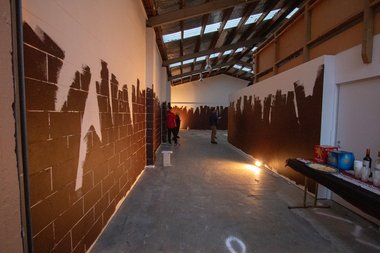
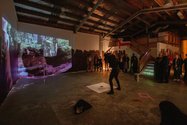
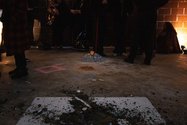



 Advertising in this column
Advertising in this column Two Rooms presents a program of residencies and projects
Two Rooms presents a program of residencies and projects
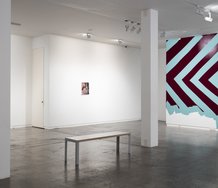
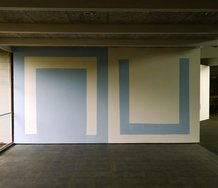
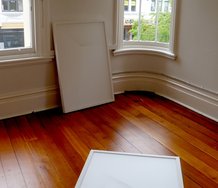
This Discussion has 0 comments.
Comment
Participate
Register to Participate.
Sign in
Sign in to an existing account.